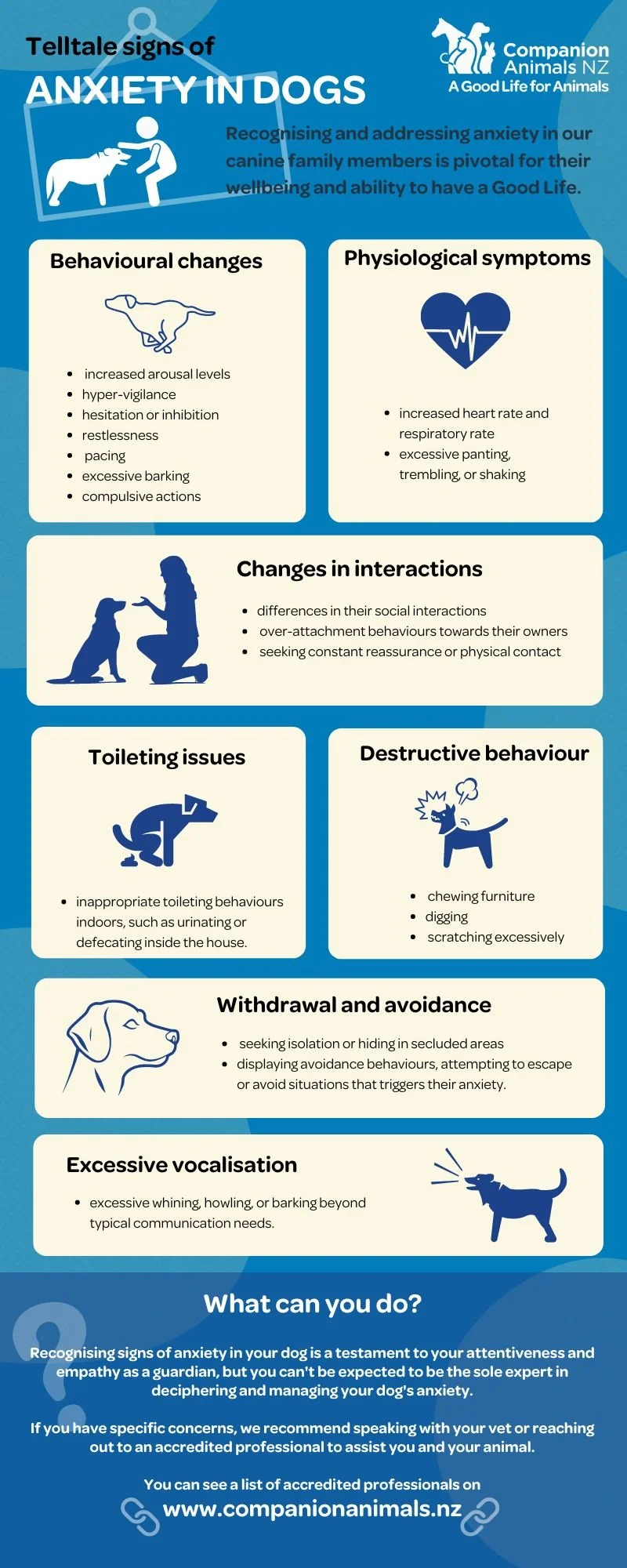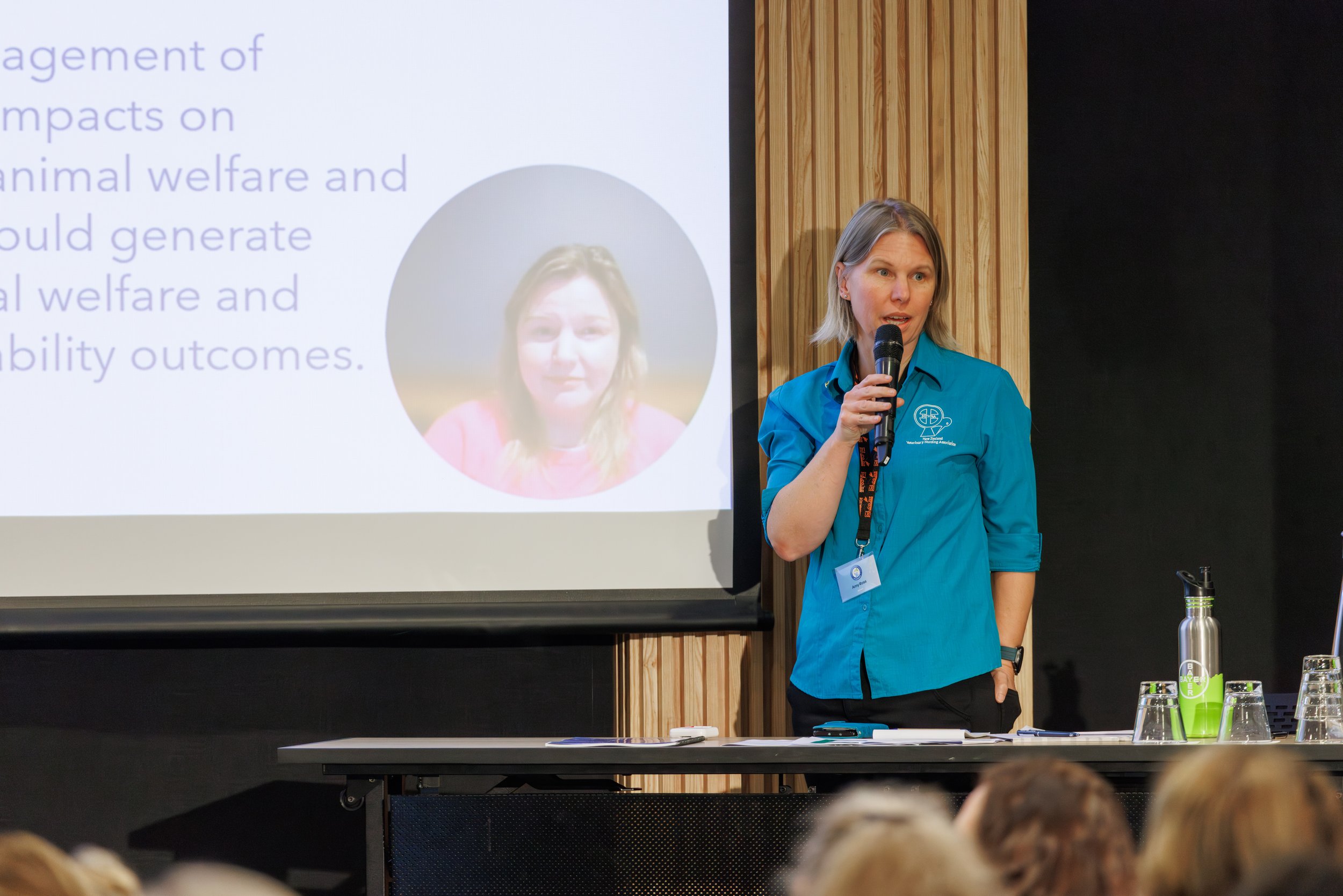In our upcoming ‘Misbehaviour or Misunderstood’ webinar series open to the public, accredited behaviour consultants and veterinary behaviourists will delve into the behaviour of companion animals. Are we interpreting our animal’s behaviour in the wrong way? How can we better understand their drivers?
Companion animals hold significant importance in the lives of many New Zealanders. More than a third of households have one or more dogs - and we boast the world's highest cat ownership rate, with over 40% of households having at least one feline friend. It is clear that pets are cherished members of our families.
Despite widespread pet ownership across New Zealand, many pet owners remain unaware of the intricacies of their animals' behaviours. What are the reasons behind their actions and the potential for behavioural challenges? So many pet owners have the best intentions, but aren’t equipped with the right knowledge.
This knowledge gap can lead to mismatches between the natural behaviours of companion animals and the expectations of their owners. As a result, behaviour issues may arise, causing distress for both pets and their humans.
Addressing these issues has become an increasingly important area of focus in the field of ‘clinical animal behaviour’. This field, which combines applied ethology and veterinary medicine, employs evidence-based strategies to address a wide range of abnormal or problematic behaviours exhibited by dogs and cats. Experts in this field employ a multidisciplinary approach, drawing upon insights from psychology, ethology, neurobiology, pharmacology, and veterinary science to develop effective solutions for managing and treating behavioural issues in companion animals.
Webinar series coming soon!
In our upcoming ‘Misbehaviour or Misunderstood’ webinar series, accredited behaviour consultants and veterinary behaviourists will delve into the behaviour of companion animals.
These experts will uncover the root causes and motivations behind companion animals’ actions, shedding light on what these behaviours signify for the animal's overall well-being. Offering practical guidance, they'll equip participants with tools to address common behavioural challenges and ensure their pets receive everything necessary for a fulfilling life.
The series will span 4-5 evening webinars, occurring fortnightly starting on the 31st of July. Each webinar will last approximately 60 minutes, providing ample opportunity for sharing insights and addressing pertinent topics. The webinars are free to attend, with the option to provide a small donation following the webinar if you found it useful - so we can continue to run these events into the future to help Kiwi pet owners across the country.
Topic number 1
Our first topic Aggression Towards Familiar People - Beyond the Myth of Dominance addresses the complexities surrounding aggression by dogs towards familiar people. Given the prevalent misinterpretations surrounding this behaviour, such as misattributing it to “dominance”, there's a pressing need to understand and address the multifaceted reasons which contribute to this aggression.
Presenting this topic will be Mat Ward, a Clinical Animal Behaviourist, who has helped thousands of pets (and their humans!) over the past 25 years. Early in his career, while completing his Master’s degree through Massey Vet School, Mat worked hands-on training problem dogs. During the 2000s he established himself as a leading behaviour practitioner in Edinburgh, Scotland, with over 130 veterinary clinics referring behaviour cases to him by the time he moved back to New Zealand in 2021. Recently, Mat published “What Dogs Want”, a fun, illustration-filled handbook for dog guardians. Mat is accredited through the Association for the Study of Animal Behaviour as a Certificated Clinical Animal Behaviourist (CCAB), and is accredited or a member of leading companion animal behaviour organisations such as CANZ, ABTC, IAABC, APBC, and FABC.
During this webinar, Mat will pass on what he has learned from 25 years in the field of dog behaviour. He will outline patterns of aggression towards familiar people he has observed over the years, explain the core reasons for this behaviour, and summarise the practical techniques and recommendations he finds most useful for his clients.
Be sure to keep an eye out for further updates on this topic on our website and social media channels! You can register your interest in attending via our form linked in the button below.
What is Companion Animals NZ Accreditation?
Companion Animals NZ Accredited professionals have demonstrated that they have met the CANZ Accreditation professional standards and follow the CANZ Code of Ethical Conduct. By choosing a CANZ Accredited professional you can be assured that they will use humane training methods that are based on an understanding of the way animals learn. Read more about this here: https://www.companionanimals.nz/accreditation
























































































